 Facebook
Facebook
 X
X
 Instagram
Instagram
 TikTok
TikTok
 Youtube
Youtube
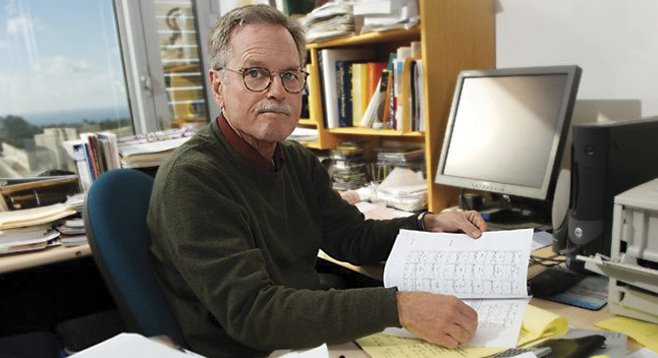
If demographics is destiny, the local corporate welfare boosters — Lincoln Club, San Diego Regional Chamber of Commerce, Centre City Development Corporation, San Diego County Taxpayers Association, ad nauseam — face future bellyaches. And the mendicants’ despair will be nirvana for most county residents.
Look at the election results. A Democrat was elected mayor — not surprisingly, because there are about 13 percent more registered Democrats than Republicans in the city. Even in the county, Democratic registrants are in a slight majority. The San Diego City Council now has a Democratic majority. Barack Obama carried the county two elections in a row — he and Franklin D. Roosevelt have been the only presidents to do that.
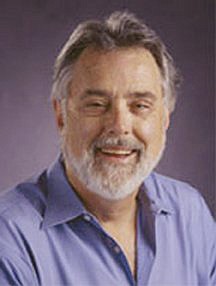
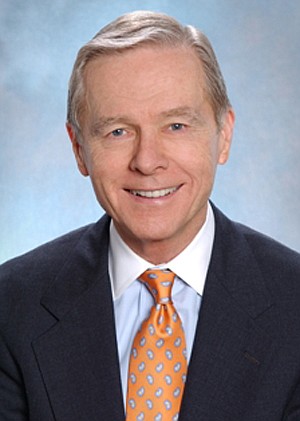
On the other hand, San Diego County clung to its antipathy to taxes and labor unions: 54.16 percent of voters thumbed down Governor Jerry Brown’s Proposition 30, which will raise taxes to support education, and 51.4 percent voted for Proposition 32, which would have eliminated unions’ ability to deduct political contributions from members’ paychecks. Statewide, Proposition 30 won and Proposition 32 was defeated, greatly because of organized labor’s indefatigable opposition.
All told, Democrats are euphoric, and demographics tell much of the tale. According to the most recent U.S. Census data, non-Hispanic white persons make up 48 percent of the county’s population; whites lost their longstanding dominance with the 2010 census. Latinos are 32.5 percent, Asians 11.4, African Americans 5.6, American Indian and native Alaskans 1.4, and Hawaiian and Pacific Islanders 0.6 percent of the local populace. Nationally this year, Hispanics, Asians, and African Americans went decisively for Obama, as did women, particularly young women. Youth voted heavily for Democrats. The county will become half Hispanic in just a few decades, points out Steve Erie, professor of political science at the University of California San Diego.
One former San Diego Republican gets much of the blame (or credit) for the Democrats’ ascendance in the county, says Erie. He is Pete Wilson, former San Diego mayor, California governor, and United States senator. Back in 1994, Hispanics did not participate much in political activity. Pete Wilson was running for reelection as governor and was trailing in opinion polls by more than 20 percent. To boost his prospects, he backed Proposition 187, which through a screening system would have prohibited illegal aliens from using public education, health care, and other social services. The proposition won, and so did Wilson. But, says Erie, the proposition was ultimately declared unconstitutional, and irate Hispanics got involved in the American political process — eventually deeply.
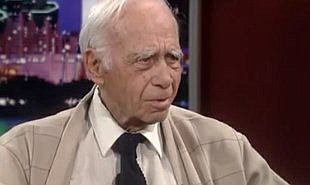
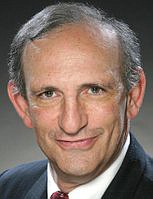
San Diego’s downtown overlords “have been dealt a double whammy” in the November election, says Erie. Filner has pledged to steer money to the neighborhoods and away from downtown and “won’t put the same old 20 faces on the committees and task forces,” says Erie. Minorities, women, and neighborhood activists will be named to these groups. U-T San Diego “will shield the old guard, but most people realize that our local ‘Papa Doc’ [as in former Haitian dictator Duvalier] and his Lynch mob at the U-T have no credibility.”

Gary Jacobson, also a political science professor at the University of California San Diego, notes that demographic changes are gradual, but they are now moving politics in a predictable direction. San Diego “is clearly a Democratic city. The downtown establishment should be worried; demographics won’t help them as more and more Latinos get registered.” Young voters are not likely to change their liberal views on social issues even as they age, says Jacobson.

In California, Democrats hold the major statewide offices and are expected to have supermajorities in both houses of the legislature. It is less likely that politicians will restore redevelopment by some other name. Tax increment financing, which is used for subsidized redevelopment, isn’t coming back, says activist Mel Shapiro. In court, Shapiro is arguing that the financing of the convention center expansion should go to the ballot. “Backers of downtown redevelopment can’t be as optimistic,” he says. He thinks the downtown football stadium won’t be built.
I talked to three Republicans, and they believe their party is in trouble and the Chargers stadium probably is dead. “Unfortunately, a few rabid anti-immigrant folks in the [Republican] party blame everything on illegal immigrants,” says Richard Rider, a former Libertarian who switched to Republican. “The perception is that [Republicans] are antiminority, not just anti-illegal immigrants. Republican leaders have to tell these idiots to shut up.” Rider believes that the football stadium will have to go to the ballot and that it will fail for lack of funding. He thinks Republicans should push school-choice issues such as vouchers and tax credits that appeal to minorities.
Republican Erik Bruvold of the National University System Institute for Policy Research worries that the urban move toward Democrats “is a permanent trend.” However, in San Diego, if Democrats become dovish and antimilitary, they will lose votes. He agrees that Republican anti-immigrant rhetoric hurts the party but feels that labor unions will resist immigration reform, and that could hurt Democrats. He once believed the downtown stadium would be built; he no longer thinks so.
Former councilmember Bruce Henderson, a Republican, says the social issues present “an extremely difficult problem” for Republicans. The party just can’t cast out members who feel strongly about these issues. He feels that in San Diego, many Republicans couldn’t vote for a gay mayoral candidate or for a Mormon for president, no matter what they told pollsters. He is not sure the Republicans will ever win the Hispanics, because in their countries of origin they are accustomed to big government.
He thinks it’s too late to stop the convention center expansion although “it’s a terrible misdirection of public resources,” but he thinks “the football stadium is in trouble” for absence of financing.
With both liberals and conservatives thinking the stadium’s chances are much dimmer, San Diego may be going through a great awakening. ■
Contact Don Bauder at 619-546-8529


If demographics is destiny, the local corporate welfare boosters — Lincoln Club, San Diego Regional Chamber of Commerce, Centre City Development Corporation, San Diego County Taxpayers Association, ad nauseam — face future bellyaches. And the mendicants’ despair will be nirvana for most county residents.
Look at the election results. A Democrat was elected mayor — not surprisingly, because there are about 13 percent more registered Democrats than Republicans in the city. Even in the county, Democratic registrants are in a slight majority. The San Diego City Council now has a Democratic majority. Barack Obama carried the county two elections in a row — he and Franklin D. Roosevelt have been the only presidents to do that.


On the other hand, San Diego County clung to its antipathy to taxes and labor unions: 54.16 percent of voters thumbed down Governor Jerry Brown’s Proposition 30, which will raise taxes to support education, and 51.4 percent voted for Proposition 32, which would have eliminated unions’ ability to deduct political contributions from members’ paychecks. Statewide, Proposition 30 won and Proposition 32 was defeated, greatly because of organized labor’s indefatigable opposition.
All told, Democrats are euphoric, and demographics tell much of the tale. According to the most recent U.S. Census data, non-Hispanic white persons make up 48 percent of the county’s population; whites lost their longstanding dominance with the 2010 census. Latinos are 32.5 percent, Asians 11.4, African Americans 5.6, American Indian and native Alaskans 1.4, and Hawaiian and Pacific Islanders 0.6 percent of the local populace. Nationally this year, Hispanics, Asians, and African Americans went decisively for Obama, as did women, particularly young women. Youth voted heavily for Democrats. The county will become half Hispanic in just a few decades, points out Steve Erie, professor of political science at the University of California San Diego.
One former San Diego Republican gets much of the blame (or credit) for the Democrats’ ascendance in the county, says Erie. He is Pete Wilson, former San Diego mayor, California governor, and United States senator. Back in 1994, Hispanics did not participate much in political activity. Pete Wilson was running for reelection as governor and was trailing in opinion polls by more than 20 percent. To boost his prospects, he backed Proposition 187, which through a screening system would have prohibited illegal aliens from using public education, health care, and other social services. The proposition won, and so did Wilson. But, says Erie, the proposition was ultimately declared unconstitutional, and irate Hispanics got involved in the American political process — eventually deeply.


San Diego’s downtown overlords “have been dealt a double whammy” in the November election, says Erie. Filner has pledged to steer money to the neighborhoods and away from downtown and “won’t put the same old 20 faces on the committees and task forces,” says Erie. Minorities, women, and neighborhood activists will be named to these groups. U-T San Diego “will shield the old guard, but most people realize that our local ‘Papa Doc’ [as in former Haitian dictator Duvalier] and his Lynch mob at the U-T have no credibility.”

Gary Jacobson, also a political science professor at the University of California San Diego, notes that demographic changes are gradual, but they are now moving politics in a predictable direction. San Diego “is clearly a Democratic city. The downtown establishment should be worried; demographics won’t help them as more and more Latinos get registered.” Young voters are not likely to change their liberal views on social issues even as they age, says Jacobson.

In California, Democrats hold the major statewide offices and are expected to have supermajorities in both houses of the legislature. It is less likely that politicians will restore redevelopment by some other name. Tax increment financing, which is used for subsidized redevelopment, isn’t coming back, says activist Mel Shapiro. In court, Shapiro is arguing that the financing of the convention center expansion should go to the ballot. “Backers of downtown redevelopment can’t be as optimistic,” he says. He thinks the downtown football stadium won’t be built.
I talked to three Republicans, and they believe their party is in trouble and the Chargers stadium probably is dead. “Unfortunately, a few rabid anti-immigrant folks in the [Republican] party blame everything on illegal immigrants,” says Richard Rider, a former Libertarian who switched to Republican. “The perception is that [Republicans] are antiminority, not just anti-illegal immigrants. Republican leaders have to tell these idiots to shut up.” Rider believes that the football stadium will have to go to the ballot and that it will fail for lack of funding. He thinks Republicans should push school-choice issues such as vouchers and tax credits that appeal to minorities.
Republican Erik Bruvold of the National University System Institute for Policy Research worries that the urban move toward Democrats “is a permanent trend.” However, in San Diego, if Democrats become dovish and antimilitary, they will lose votes. He agrees that Republican anti-immigrant rhetoric hurts the party but feels that labor unions will resist immigration reform, and that could hurt Democrats. He once believed the downtown stadium would be built; he no longer thinks so.
Former councilmember Bruce Henderson, a Republican, says the social issues present “an extremely difficult problem” for Republicans. The party just can’t cast out members who feel strongly about these issues. He feels that in San Diego, many Republicans couldn’t vote for a gay mayoral candidate or for a Mormon for president, no matter what they told pollsters. He is not sure the Republicans will ever win the Hispanics, because in their countries of origin they are accustomed to big government.
He thinks it’s too late to stop the convention center expansion although “it’s a terrible misdirection of public resources,” but he thinks “the football stadium is in trouble” for absence of financing.
With both liberals and conservatives thinking the stadium’s chances are much dimmer, San Diego may be going through a great awakening. ■
Contact Don Bauder at 619-546-8529
Comments